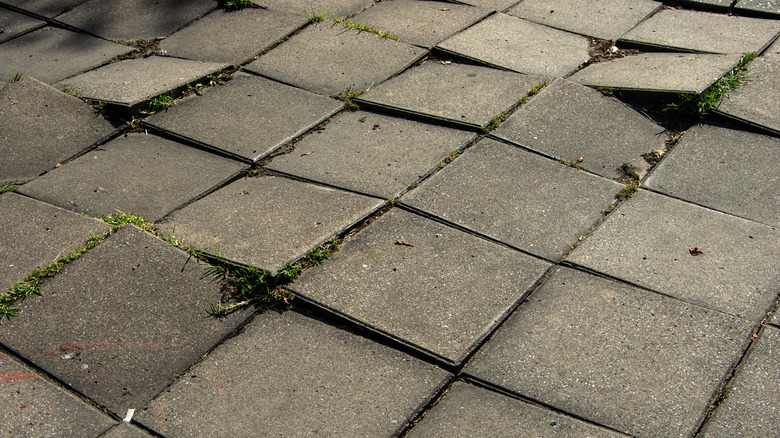Reasons Your Paver Patio Is Failing & How To Avoid It
When you're looking for a DIY paver project that will improve your yard and landscape, installing a paver patio is a popular selection. However, when you or a previous owner of your home made some errors during the construction of the patio, you could end up with a project that is failing after a few years. If your patio is failing or if you simply want to avoid this type of error when you're doing this DIY paver project, three primary reasons cause a paver patio project to fail: A poor base layer, poor drainage, or incorrect edging. Other problems you're noticing nearly all relate to one of these three issues.
If you fail to create a secure edge for the patio pavers, the entire layout may begin to pull apart as the stones begin shifting outward at the edges. Pavers that pull apart may begin to show weeds in the joints, and these plants can further force the individual stones to separate.
To prevent this issue, you need a secure edge that contains the patio pavers and keeps them tightly aligned. When creating the base for the patio, you should dig out an area that extends 6 to 8 inches beyond the planned perimeter edge of the layout. Apply sand and gravel to this area in the same manner you use when you're creating the base for the main section of stones. You can use plastic edging frames or add secure wall block stones to create the edging for your patio.
A poorly compacted base material could cause the patio paver installation to fail
If the paver patio installer did not create the proper base underneath the stones, this base will eventually deteriorate and cause a failure of the paver patio. Not installing the aggregate base materials properly or using the wrong materials represent some of the most common mistakes when laying pavers in your outdoor space. Without a properly compacted base, the paver stones may not be able to support the weight of people using the patio, causing the individual stones to move and separate. Simply put: The base layer is the most important aspect to whether a paver patio installation will avoid failure.
To create a proper base layer, you need to dig down to accommodate the height of the paver stones and the thickness of the base materials. You could use a tamping device to compact the soil alone, or you can compact everything after adding a gravel layer over the soil.
Signs of a poorly compacted base layer are uneven pavers. Whether some of the stones are popping vertically or are sinking downward, the settling of the base layer could be to blame. Rotational failure of the stones can be a sign of a poor slope in the base layer that causes stones in the middle of the layout to shift. Beyond compacting the base material tighter, you also could excavate the site deeper to try to avoid this type of failure of the patio paver layout.
Poor drainage underneath the pavers can lead to a failure
When your patio paver layout does not have good drainage for rainwater, you might see issues like standing water or stones that feel like they're sinking or shifting when you walk on them after a storm. You also might notice that dirt and sand that sits between the individual stones is washing away, allowing water to pool between the stones. Some stones may sink without proper patio drainage, which can create a trip hazard on a paver patio.
Beyond a potential failure of your patio paver layout, poor drainage can encourage weeds and fungus to grow between and on the stones. Having water on the pavers that doesn't drain properly in a location that has freezing temperatures can force a separation of the stones. Freezing water can penetrate small cracks in the paver stones, causing them to expand and, eventually, break apart.
If your paver patio layout doesn't have the proper base layer, this can cause significant drainage issues. Unfortunately, the only way to fix this issue is to remove the stones, fix the base layer drainage, and reinstall the stones. A 4-to-6-inch base layer of compacted gravel topped with an inch of concrete sand leads to proper drainage. When installing the pavers, work on creating a slope or pitch that encourages water to drain toward a safe area of the landscaping or lawn. Use a level as you're compacting the base layer and placing the stones to ensure the proper slope.


